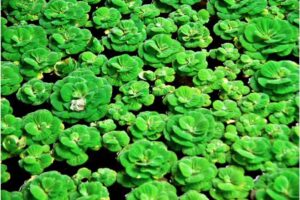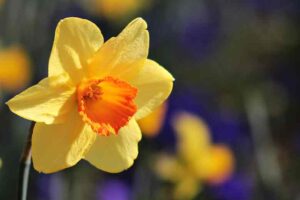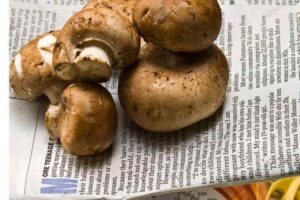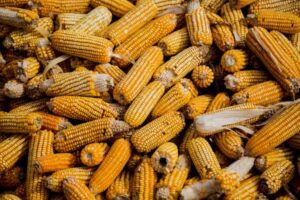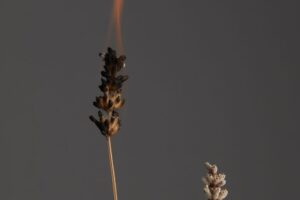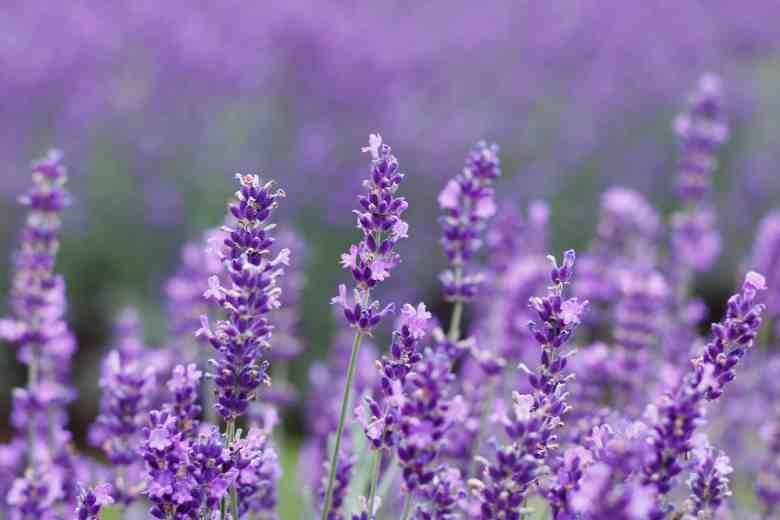
Lavender is a beautiful, fragrant flower that can be found in many parts of the world. Does lavender grow in Colorado?
The answer is yes. Colorado is home to a variety of climates and soil types that are perfect for growing lavender. In fact, the state is home to a thriving lavender industry, with many farmers and entrepreneurs growing and selling lavender products such as essential oils, bouquets, and more.
Whether you’re looking to grow lavender in your own garden or purchase it from a local business, Colorado is a great place to do so.
Climate Requirements for Lavender Growth in Colorado
Lavender is a fragrant and beautiful flowering plant that is a popular choice for gardens and landscaping in Colorado. However, for successful growth of lavender in Colorado, certain climatic requirements must be met.
The plant requires a full-sun location with well-draining soil and a mild winter climate. Colorado’s dry, sunny days are ideal for lavender growth, but cold temperatures can be a challenge.
If planted in the right location and given proper care, lavender can thrive in Colorado. With the right climate requirements, your garden can be full of the sweet scent of lavender!
Planting and Care Tips for Lavender Growing in Colorado
Lavender is a drought-tolerant, hardy perennial that performs well in many climates, including Colorado’s. Its aromatic foliage and beautiful flowers make it a popular choice among gardeners. Colorado’s unique climate, with its hot, dry summers, cold winters, and alkaline soils, poses certain challenges when it comes to growing lavender. Here are some tips to help you grow lavender successfully in Colorado:
Choosing the Right Variety:
Several varieties of lavender are more suited to Colorado’s climate. These include ‘Munstead’, ‘Hidcote’, ‘Grosso’, and ‘Provence’. All of these have been shown to be cold hardy and can handle the alkaline soils found in Colorado.
Planting:
- When to Plant: The best time to plant lavender in Colorado is in the spring, after the danger of frost has passed, or in the early fall, allowing the plants to establish before the winter.
- Where to Plant: Choose a location with full sun (at least 6 hours of sun per day) and well-drained soil. Lavender does not do well in wet, clayey soils.
- How to Plant: Dig a hole twice as wide and as deep as the root ball of your lavender plant. If your soil is heavy clay, consider amending it with some compost and gritty material like sand or fine gravel to improve drainage. Place the plant in the hole, ensuring that the top of the root ball is level with the soil surface, then backfill the hole, firming the soil gently around the plant.
Care and Maintenance:
- Watering: Lavender is drought-tolerant once established and overwatering can lead to root rot. Water your lavender plants deeply but infrequently, allowing the soil to dry out between waterings.
- Feeding: Lavender typically doesn’t require a lot of fertilization. If you have poor soil, consider using a slow-release granular fertilizer in the spring.
- Pruning: Prune your lavender plants in the early spring, removing old, woody stems to encourage new growth. Pruning can also be done after the first bloom to encourage a second bloom later in the season.
- Winter Care: While some lavender varieties are cold-hardy, they can still benefit from a bit of winter protection. Consider mulching around the base of the plants with straw or wood chips to protect the roots from freezing temperatures.
Troubleshooting:
Common problems for lavender in Colorado include root rot from overwatering, and damage from pests like aphids and spittlebugs. If you notice yellowing leaves or a lack of vigor, consider adjusting your watering schedule. If you see pests, consider a gentle insecticidal soap or a strong stream of water to dislodge them.
Common Lavender Varieties Suitable for Colorado
Colorado is known for its many outdoor activities, and its beautiful landscape. With its diverse terrain, Colorado is the perfect place to enjoy a variety of different lavender varieties. Depending on the region, there are a variety of lavender varieties that will thrive in the Colorado climate.
From French Lavender, to Spanish Lavender, to English Lavender, to Italian Lavender, and more, there are plenty of options to choose from.
Each variety of lavender will bring its own unique color and scent to your Colorado garden. With the right care and maintenance, you can enjoy a beautiful and fragrant garden of lavender for many years.
So whether you’re looking to create a beautiful landscape, or just want to enjoy the calming scent of lavender in your garden, Colorado has plenty of lavender varieties to choose from!
Potential Pests and Diseases in Colorado Lavender Gardens
Colorado is a great place for lavender gardens, but just like any other flower or plant, potential pests and diseases can cause trouble for your garden.
Pests like aphids, spider mites, and thrips can all cause damage to your lavender, while diseases such as rust, gray mold, and powdery mildew can also affect the plant’s health. It’s important to be aware of these potential problems and take steps to avoid them.
Regular monitoring of your garden to check for pests and diseases can help you catch any issues early and treat them before they become too serious.
Additionally, it’s important to practice good gardening habits such as proper watering, weeding, and mulching to ensure your lavender stays in tip-top shape. With the right care, your Colorado lavender garden will be a sight to behold for years to come!
Harvesting and Drying Lavender Grown in Colorado
Colorado is known for its gorgeous lavender fields, and the calming scent of lavender is a welcome addition to any garden. However, harvesting and drying lavender grown in Colorado requires a few extra steps.
First, lavender should be harvested in the morning, when there is still dew on the flowers, and you should be sure to wear gloves and a hat while harvesting.
Then, the lavender should be hung upside down in a cool, dry place to allow for optimal drying.
Once the lavender is completely dry, it can be stored in an airtight container. With a few extra steps, you can enjoy the bounty of Colorado’s lavender fields and reap the benefits of this calming and fragrant herb.
FAQs About the Does Lavender Grow In Colorado
What type of climate is necessary for Lavender to grow in Colorado?
Answer: Lavender grows best in climates with mild winters and dry summers. Colorado’s climate is ideal for growing lavender since it has long, hot summers and moderate winters.
Can I grow Lavender from seed in Colorado?
Answer: Yes, you can grow Lavender from seed in Colorado. However, it is recommended to purchase seedlings from a nursery or online vendor since the seeds can be sensitive to the extreme temperatures in Colorado.
How much maintenance does Lavender require in Colorado?
Answer: Lavender is a low-maintenance plant that only requires occasional trimming and weeding. It is important to water the plant regularly and fertilize it every few months to ensure it stays healthy and blooms.
Conclusion
No, lavender does not grow in Colorado. Lavender prefers a Mediterranean climate, which Colorado does not have. Colorado does have a variety of other plants and herbs that can be grown in the area, but lavender is not one of them.

